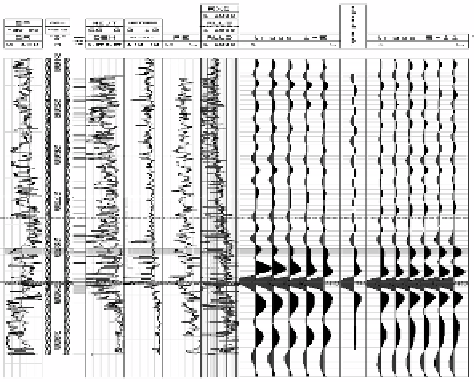Database Reference
In-Depth Information
In the first sub-step, we firstly determine whether a
JMPset
can be supported by a
transaction
d
D
. If so, we then sum up the total
subsup
of the transaction
d
in one
class. In this way, the
subsup
y
of the transaction
d
in the class
y
can be obtained,
where
y
∈
Y
. In the second step, the testing transaction
d
can be labeled as the class
y
,
where the
subsup
y
is greater than all the others. If the transaction
d
has the same
maximum
subsup
y
in two classes, then it is labeled as the class, whose
JMPs
are
generated earlier than the other.
The classification process of the
MOUCLAS
algorithm is shown in Figure 4.
∈
5 Example of
MOUCLAS
Application in Reservoir
Characterization
Oil/gas formation identification is a vital task of reservoir characterization in the
petroleum industry, where the petroleum database contains such records (or attributes)
as seismic data, various types of well logging data and petrophysical property data
whose values are all quantitative.
An illustration of using well logging date for purpose of oil/gas formation
identification is illustrated in Figure 5. The well logging data sets include attributes
(well logging curves) of GR (gamma ray), RDEV (deep resistivity), RMEV (shallow
resistivity), RXO (flushed zone resistivity), RHOB (bulk density), NPHI (neutron
porosity), PEF (photoelectric factor) and DT (sonic travel time). Since most of the
reservoirs are horizontally and vertically heterogeneous, no depth information is used
for training.
Fig. 5.
Quantitative Petroleum Data for MOUCLAS Mining
(note: the dashed indicate the location of oil formation )
One transaction of the database can be treated as a set of the items corresponding
to the same depth and a class label (oil/gas formation or not). A hypothetically useful
MP
or
JMP
may suggest a relation between well logging data and the class label of

Search WWH ::

Custom Search